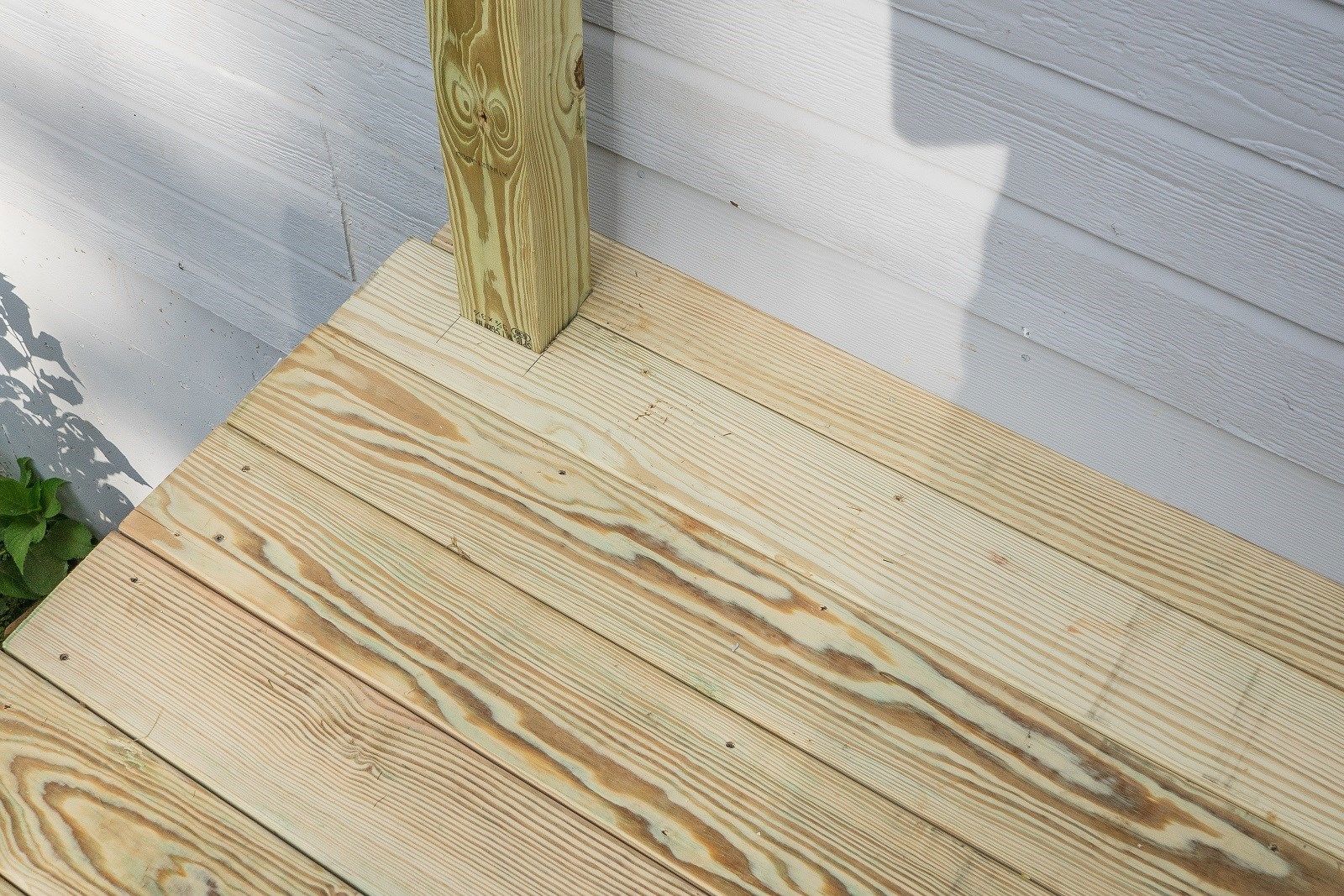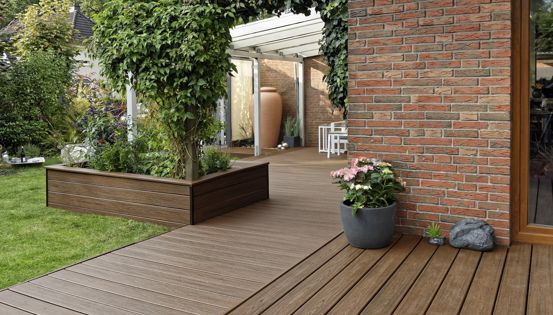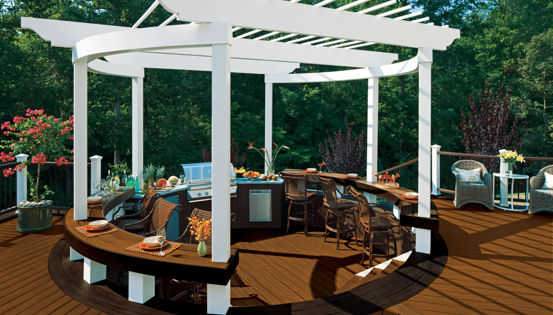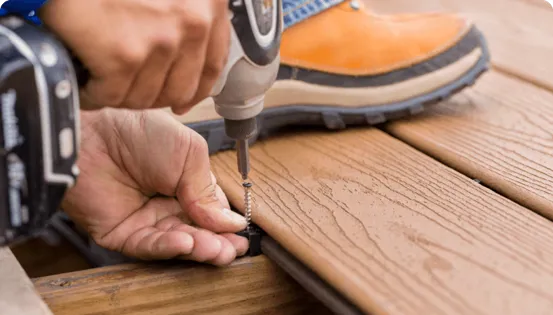Usually, the best policy to use for surfacing an attractive wood floor is to always expose the best side of the board. If your deck boards are wet, some carpenters prefer to install them bark side up to prevent cupping. This technique will orientate the visible growth rings in a downward arc like a dome to eliminate any protruding corners and allow water to run off the boards. Another reason to install the decking bark side up is because the pith side is prone to shelling, especially in trees that have dense latewood growth rings like southern pine. As a general rule, the drier the decking, the fewer problems you will have no matter how you install it. Also, consider that there is more sapwood on the bark side of a board, and sapwood more easily accepts stains than heartwood. We recommend you consult with your lumber supplier for a recommendation based on the species of wood and the climate in your region.







